Internally Funded
Collaborator: Heron Bridge Education, LLC
In the Summer of 2019, researchers at the FAU Center for Environmental Studies (CES) collaborated with Jan Booher of Heron Bridge Education, LLC on a resilience mapping initiative in Broward County, Florida. The goal of this collaboration was to bring to light the many complex factors and processes at play within communities, and within the Estates of Fort Lauderdale community specifically, that work to contribute to community resilience to environmental hazards including flooding, extreme wind and extreme heat.
Reputable census-based vulnerability and resilience assessments such as the Social Vulnerability Index (SoVi) and the Baseline Resilience Indicators for Communities (BRIC) offered an important conceptual foundation for this study. Utilizing the BRIC indicators and framework as a point of departure, this study serves to examine the roles that locally tailored BRIC indicators and dimension types play in shaping resilience within Broward County communities.
The community selection process for this study consisted of a combination of key gatekeeper meetings and spatial vulnerability assessments of various communities within Broward County that were experiencing environmental hazards and had an interest in examining and improving their resilience. Eventually, the Estates of Fort Lauderdale community emerged as the first most conducive and most accessible community with which CES would work.
“We are experiencing hazards at an alarming rate that communities need to be prepared to address.”
Jan Booher, Heron Bridge Education, LLC
The project began with a series of listening sessions and training sessions which served to engage community members and build the community capacity necessary for a successful and strong collaboration. The partnership nature of these interactions helped to build trust and buy-in from community members. Moreover, it allowed their voices and experience to shape the survey instrument for the study and the study process, as community members led the way in the data collection process and assisted with data input.
Community members helped to administer household-level surveys composed of questions that touched upon the seven major resilience dimensions highlighted within this study: communication, knowledge, social capital, mobility, infrastructure, institutional efforts and financial independence.The survey in its entirety aimed to uncover the many complexities of, and multidimensional processes within, the community that shape the community’s resilience. Some examples of topics addressed within the survey, and thus analyzed to produce results, included community connectedness, sense of place, preparedness and response efforts, resources provided and shared, and knowledge spread via social events and everyday communication.
“Things are changing, I see weather is becoming more intense, and every year I see a little bit more.”
Leslie Kevles, resident at the Estates of Fort Lauderdale
The responses of all household surveys were scored according to their contribution to resilience within their appropriate resilience dimensions and then were averaged across households to produce community resilience dimension scores. This then allowed for the production of an overall resilience composite indicator score for the entire community. The overall results provided insight into community strengths and existing forms of resilience, revealing that the Estates Community is less vulnerable than determined by another analysis approach that relies solely on readily available data, such as age, income, education, or race, from sources such as the U.S. Census.
Additionally, an in-depth quantitative and qualitative interpretation of the data and of the correlations between survey responses resulted in the emergence of larger storylines that are ingrained within the makeup of the community and can help guide future planning. The three major themes that resulted include: 1) place attachment and community connectedness encourage weather-related information sharing; 2) limited experiences and skills impede weather preparedness and response actions; and 3) weather preparedness and response experiences are unexpectedly associated with low evacuation. These themes provide a richer and more actionable resilience understanding than is possible relying on Census data alone.
“It is also a very, very important contribution to Southeast Florida’s continuing documentation, on a timeline, of what people are experiencing with the increased hazards that are caused by climate change...”
Jan Booher, Heron Bridge Education, LLC
Building on the experiences from the research, in the Fall of 2020, FAU’s CES held a Community Resilience Photo Documentary Workshop, a four-part series that provided an opportunity for Estates community members to share their perspectives and tell their climate resiliency stories. Through a series of workshops and photo assignments, participants provided glimpses into their everyday lives and their journeys through a changing climate. When pieced together, these glimpses produced a visual storyline personalized to members of the community. The photo story further personalized and added dimension and relatability to their unique experiences.
To gain a better understanding of these efforts, the motivation for this research, and the importance of this work, we invite you to view the project promo video and explore the entire photo story.
Sample survey questions include:
How long have you lived in the Estates of Fort Lauderdale? (Select all that apply)
❏ Less than 1 year
❏ 1-5 Years
❏ 6-10 Years
❏ 11-25 Years
❏ 25+ Years
❏ I am a seasonal resident
Are you aware of social events being offered in your community?
a. Yes
b. No
Do you attend these social events?
a. Yes
b. Sometimes
b. No, please specify why not:
Do you know if any of the following actions have occurred in your community over the last few months? (Select all that apply)
❏ Storm drain installation/ maintenance
❏ Seawall installation/ maintenance
❏ Paving at higher elevations across entire community
❏ Policy changes
❏ Updates to community buildings (for example impact doors/windows, updated roof) s
❏ Increased access to information and/or recovery resources
❏ Better planning for emergencies and weather events
❏ None
❏ I don’t know
❏ Other, please specify:
Community selection involved a spatial vulnerability exploration at the Census Block Group resolution within Broward County, FL. The three highly influential vulnerability components of income, age and mobile home presence were incorporated into the assessment. The resulting map showed that the Estates of Fort Lauderdale falls within two Census Block Groups of varying vulnerability (Census Track 804.02, Block Group 1 and 2)- the first Block Group was classified as “Medium High Vulnerability” and the second block group is classified as “High Vulnerability”. This assessment helped to affirm the community as an applicable study area and serves as a great visually starting point, but not a complete picture.
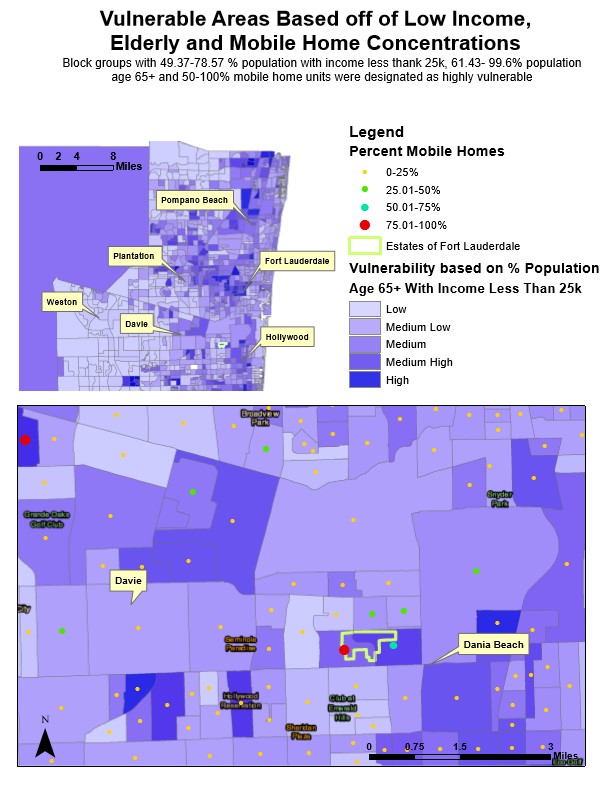
The survey responses gathered from the 100 household surveys were scored and utilized to produce resilience dimension scores and an overall resilience score for the community. The table below displays the overall resilience score for the Estates of Fort Lauderdale (.6) as well as the score breakdown across the seven dimensions. All thirty six survey questions were divided amongst the seven dimensions based on topic and subject matter. Questions within dimensions were scored on a scale of 0-1 and answer choices that contributed higher to resilience received greater scores. The scores for the relevant questions within each dimension were then averaged to also be weighted equally on a scale of 0-1 with higher scores (closer to 1) representing greater resilience. Community dimension scores were then generated by averaging the household (survey) level scores. Finally, these community dimension scores were then averaged (added up and divided by seven) to generate a community resilience score of .6. The specific scoring of resilience dimensions help to pinpoint strengths of the community as well as areas for improvement.
| Dimension | Dimension Score (0-1) | Overall Estates of Fort Lauderdale Score (0-1) |
| Institutional Efforts | 0.3 |
0.6 Averaged seven dimension scores |
| Financial Independence | 0.5 | |
| Infrastructure | 0.5 | |
| Mobility | 0.5 | |
| Knowledge | 0.5 | |
| Communication | 0.7 | |
| Social Capital | 0.8 |
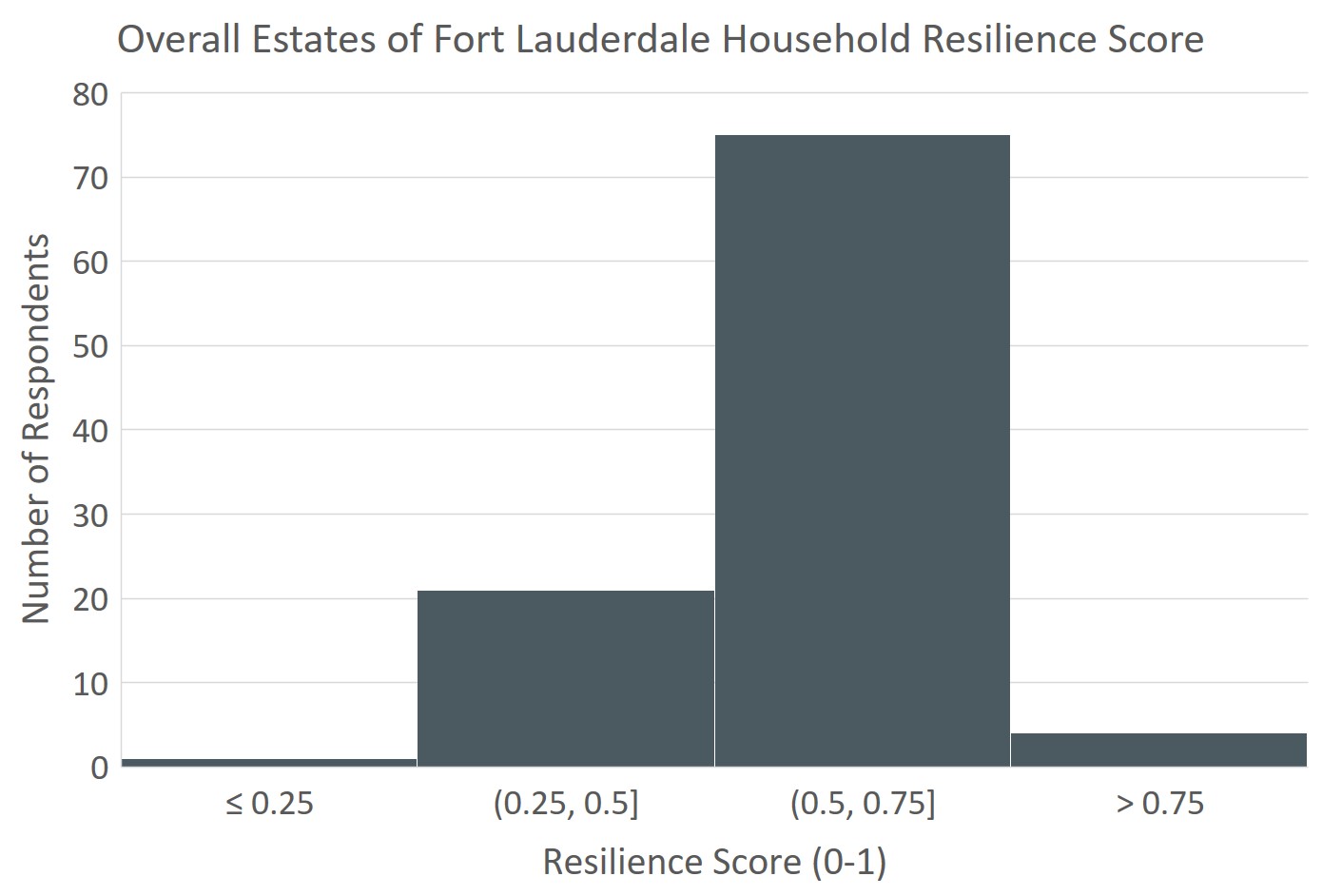
Through an in-depth quantitative and qualitative interpretation of the data, dimension scores, dimension to dimension correlations and question to question cross tabulations, trends and processes arose that helped to generate conceptual conclusions. Consolidation and abstraction of these key conclusions lead to the creation of three major community storylines or themes as is evident below.
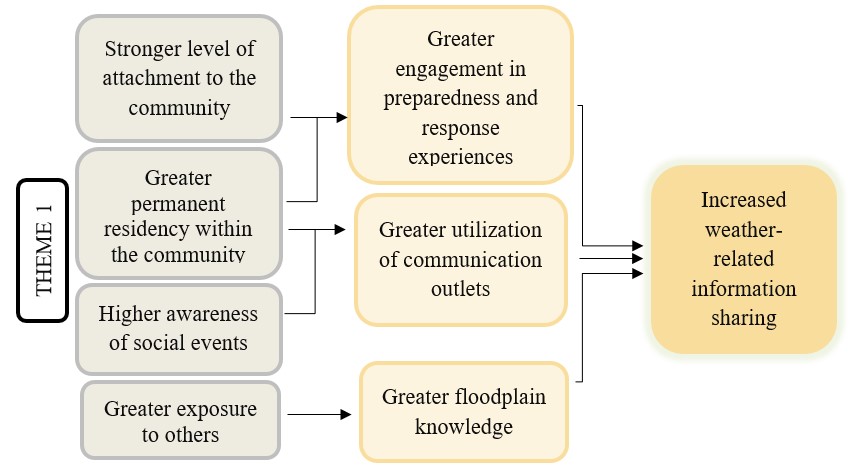
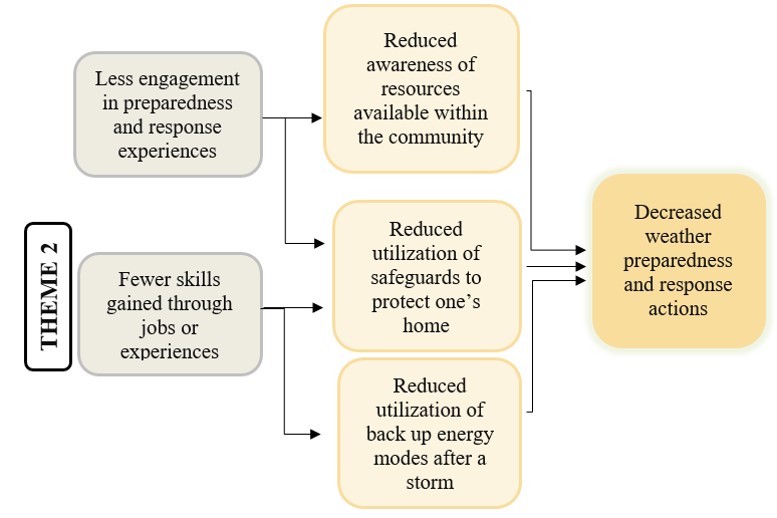
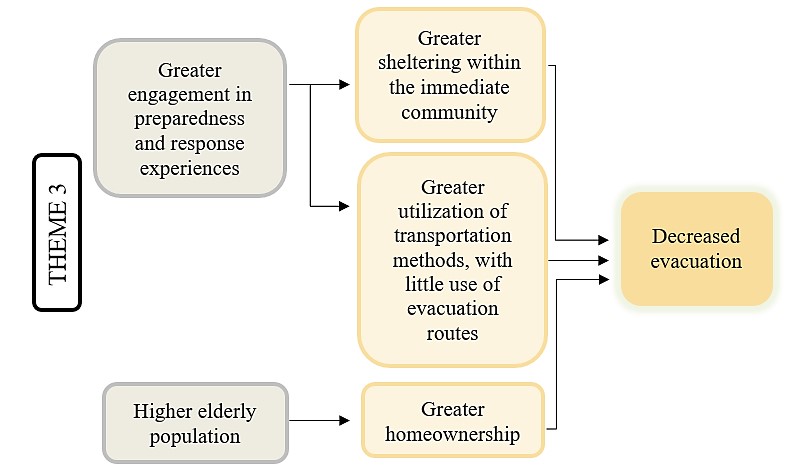
The findings of this study could help inform future decision making at the community level and beyond. The specific scoring of resilience dimensions help to pinpoint strengths of the community as well as areas for improvement. Moreover, the correlations between dimensions and cross tabulations highlight interdependencies and connections that exist within the community. Thus, community leaders can capitalize on the strengths, or higher scoring dimensions, to help foster other correlated dimensions.
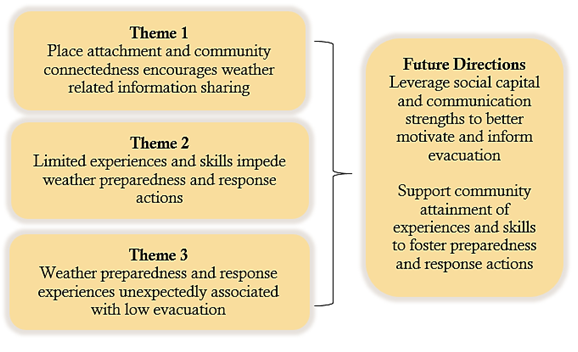
Additional Resources: